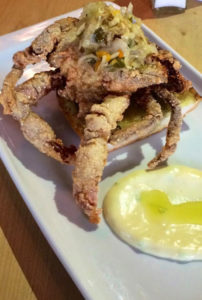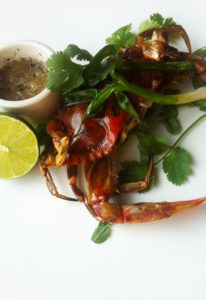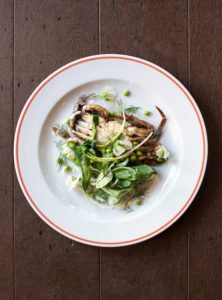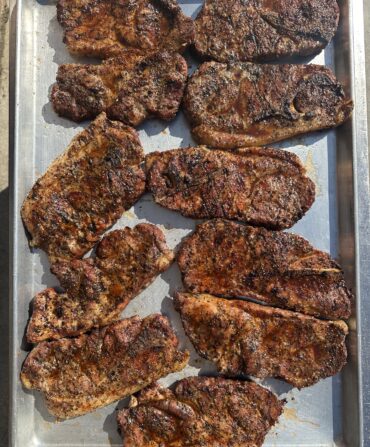If you’ve ever picked through the calcified shell of a blue crab in search of tender meat, you know that it doesn’t come easy. That’s why chefs across the country go wild when the weather warms up and the sea delivers a bumper crop of floppy soft-shells. In southerly cities like Charleston and New Orleans, it’s happening now. If you live a little farther to the north, get ready. The crabs start coming around the beginning of May, and they won’t stop until the end of the summer.
Soft-Shell 101
Soft-shell crabs here in the United States are typically regular old blue crabs in the middle of a major transition. In the late spring and summer, growing crabs of all stripes shed their exoskeletons. Once they’ve busted out of those old shells, replacements harden in a matter of hours. The trick to harvesting soft-shells is to catch them in the transitional stage. Rather than scour the ocean for soft-shelled crabs, fishermen typically capture them before they molt and hold them in saltwater tanks. As soon as the crabs drop their shells, they’re pulled out of the water, which stops a new exoskeleton from hardening.
Shopping for Soft-Shells
Crabs are at their weakest when molting. They won’t move much. But if the soft-shells at your local seafood market aren’t moving at all, don’t buy them. Soft-shells should be alive until no more than a few hours before cooking. If you’re taking live crabs home, keep them on ice in the coldest part of the refrigerator and cook them within a day.
Do I need to clean them?
Plenty of fishmongers will take care of the cleaning for you, and you can even cook an uncleaned crab if you’re so inclined. You’ll just have to deal with gristle and chew, and you’ll have a few tough pieces on the plate when you’re done. But the cleaning process is easy, and highly recommended. Here’s how it goes: First, using a sharp pair of kitchen shears, slice off the mouth and eyes, and squeeze out the jelly-like substance behind the cut. Then, gently lift the top shell on the left side. Reach a finger inside and scoop out the gills. Repeat the process on the right side. Finally, flip the crab and remove the tough apron on the belly. Now, you can eat the whole crab. Just keep it on ice until you’re ready.
Soft-Shells Three Ways
Fried softies are everywhere this time of year. And while they’re undeniably delicious, there’s more than one way to cook a crab. For guidance, we asked for recipes from three top-notch Southern chefs who deep-fry, grill, and sauté soft-shells in their kitchens. Look below to learn their techniques.











